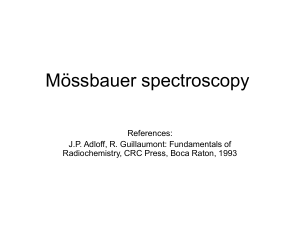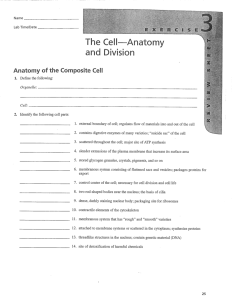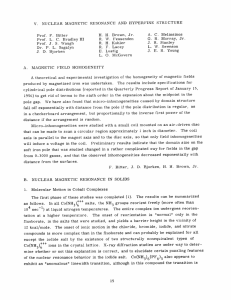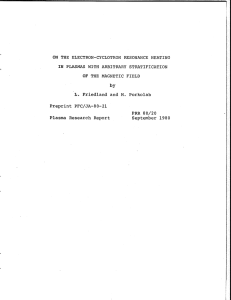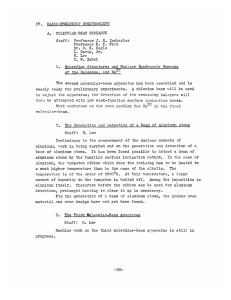I in 1957 unfortunately by him during his graduate studies... prize in 1961 in physics. ...
advertisement
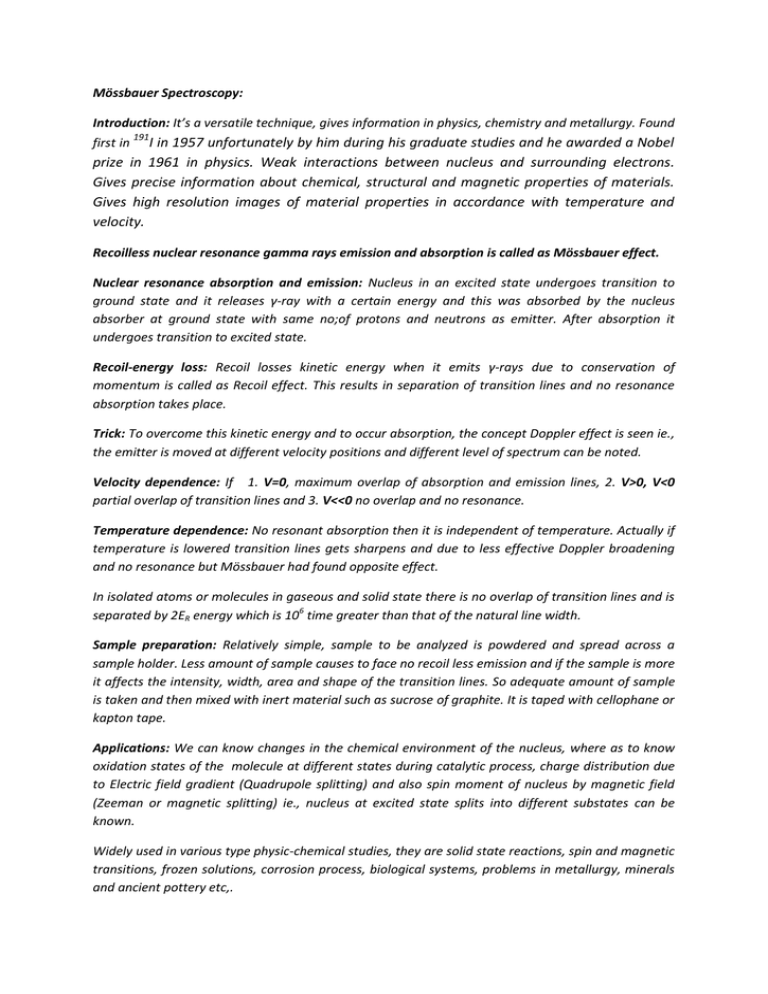
Mössbauer Spectroscopy: Introduction: It’s a versatile technique, gives information in physics, chemistry and metallurgy. Found first in 191I in 1957 unfortunately by him during his graduate studies and he awarded a Nobel prize in 1961 in physics. Weak interactions between nucleus and surrounding electrons. Gives precise information about chemical, structural and magnetic properties of materials. Gives high resolution images of material properties in accordance with temperature and velocity. Recoilless nuclear resonance gamma rays emission and absorption is called as Mössbauer effect. Nuclear resonance absorption and emission: Nucleus in an excited state undergoes transition to ground state and it releases γ-ray with a certain energy and this was absorbed by the nucleus absorber at ground state with same no;of protons and neutrons as emitter. After absorption it undergoes transition to excited state. Recoil-energy loss: Recoil losses kinetic energy when it emits γ-rays due to conservation of momentum is called as Recoil effect. This results in separation of transition lines and no resonance absorption takes place. Trick: To overcome this kinetic energy and to occur absorption, the concept Doppler effect is seen ie., the emitter is moved at different velocity positions and different level of spectrum can be noted. Velocity dependence: If 1. V=0, maximum overlap of absorption and emission lines, 2. V>0, V<0 partial overlap of transition lines and 3. V<<0 no overlap and no resonance. Temperature dependence: No resonant absorption then it is independent of temperature. Actually if temperature is lowered transition lines gets sharpens and due to less effective Doppler broadening and no resonance but Mössbauer had found opposite effect. In isolated atoms or molecules in gaseous and solid state there is no overlap of transition lines and is separated by 2ER energy which is 106 time greater than that of the natural line width. Sample preparation: Relatively simple, sample to be analyzed is powdered and spread across a sample holder. Less amount of sample causes to face no recoil less emission and if the sample is more it affects the intensity, width, area and shape of the transition lines. So adequate amount of sample is taken and then mixed with inert material such as sucrose of graphite. It is taped with cellophane or kapton tape. Applications: We can know changes in the chemical environment of the nucleus, where as to know oxidation states of the molecule at different states during catalytic process, charge distribution due to Electric field gradient (Quadrupole splitting) and also spin moment of nucleus by magnetic field (Zeeman or magnetic splitting) ie., nucleus at excited state splits into different substates can be known. Widely used in various type physic-chemical studies, they are solid state reactions, spin and magnetic transitions, frozen solutions, corrosion process, biological systems, problems in metallurgy, minerals and ancient pottery etc,.



